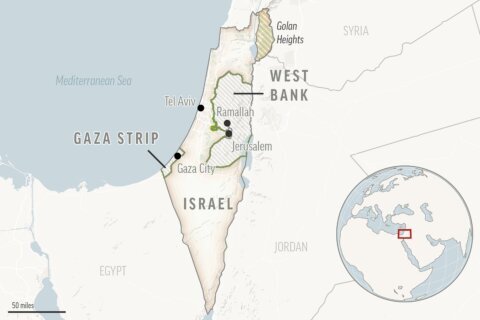Cash stuffing is a trendy term, popular with Generation Z and popularized on social media sites like TikTok. But the concept is hardly new.
Still, it’s a creative way to save money — and certainly one that deserves to catch on. So, if you’re wondering if it works and if you should give it a try, consider this your cash stuffing crash course.
[READ: How to Create a Saving Strategy]
What Is Cash Stuffing?
The most popular version of cash stuffing is putting money into envelopes — with each envelope assigned a spending category. Money for groceries goes in one envelope, utilities in another and so on. That way, you always have money for certain segments of your budget.
But not everyone on TikTok and Instagram is stuffing cash into envelopes. Some people are creating a cash stuffing binder as a way to budget. Others stuff cash into glass bottles until they need the money for an emergency or impulse shopping, and then they break the glass open.
In other words, how you play the cash stuffing game is up to you — it’s just a fun way to get you to budget or save money.
Lyle Solomon, a consumer finance lawyer and principal attorney at Oak View Law Group in Auburn, California, says that he did a form of cash stuffing in his early adulthood when he had little income.
“I had to keep track of every penny to break even by the end of each month, and this method came in handy,” Solomon says. “So, cash stuffing may be trending now, but the method itself is old, and I can say it’s really effective.”
Why Does Gen Z Like Cash Stuffing?
Some Gen Zers may hate cash stuffing, and for some people who like budget calendars and budgeting apps it may not be all that helpful. But as noted, cash stuffing has spread on social media sites that Gen Z use a lot, like TikTok and Instagram.
As for its appeal to Gen Z, cash stuffing can be just what the accountant ordered for those who like to handle cash. Your money may feel more real to you when you’re holding paper bills.
Solomon says that cash stuffing can be a great way to budget and spend money “because it helps curb compulsive spending and racking up credit card debt. The method also helps avoid the stress of mental accounting because you know where your money is going and that your bills have been taken care of.”
“So, for Gen Zers, cash stuffing is an excellent method to build good financial habits that they can carry over for the rest of their lives, even if they switch to predominantly digital payment methods and start using credit cards,” he adds.
The pandemic taught a lot of people to become creative with their spending and budgeting. Supply chain issues and inflation have also spurred people to be careful with their cash. After all, rising prices can make money disappear even faster from a bank account.
Cash stuffing forces people to pay close attention to the money they have, an important feature in these inflationary times.
[Related:Tips to Make Ends Meet During High Inflation]
The Pros and Cons of Cash Stuffing
Before you empty out your bank account and adopt cash stuffing as a way to budget, you will want to consider the pros and cons.
The pros of cash stuffing include:
— Better organization. Taking cash out of a bank account and putting it in envelopes or a binder may be an effective way to make sure your money goes where it’s intended — and not to something else.
— More time spent on budgeting. It could be argued that banks have made budgeting too easy. When you automate all or most of your monthly bills, you aren’t really thinking about where your money is going. If you’re dividing your cash into compartments, you might question whether an insurance bill is too high or whether your grocery bill is too low, and you’ll start comparison shopping or readjust your spending.
— Potentially less stress. If you’re better organized with your money and know that you’re not likely to overspend with your cash stuffing system, you should feel less anxious.
But there are some cons associated with cash stuffing, including:
— Your money is less protected. If you had a fire, all that hidden money might go up in smoke. (A typical homeowners’ insurance policy covers only a couple hundred dollars of cash.) Or, your home could be robbed. If some cybercriminal manages to steal your money from a bank account, you are insured and will get your money back but if someone steals your cash, it’s gone.
— The world is digital. Cash stuffing can work very well for purchases like groceries or buying clothes at a department store. But you may find that it’s not worth the trouble to put cash into an envelope every month to pay your rent, utilities, streaming services and other bills that prefer to receive digital payments with a debit or credit card.
— There’s no interest when you hoard cash. With some savings accounts offering high interest, cash stuffing could mean you lose out on some potentially significant earnings from interest.
[READ: Things to Watch When Interest Rates Go Up.]
If you like the idea of cash stuffing, the best way to approach it is to start off gradually. Use it as a way to divide money for some bills or for extra savings.
Kat Goegan, the office administrator for At Your Service, a tax and money transferring business in Hamilton, Ontario, says she uses cash stuffing as a saving tool.
“I didn’t realize what I was doing had such a trendy name,” she says. She and her husband have a bank account for bills, but when she realized she was often spending money a little too frivolously, she started hiding money in what she calls the “secret stash.”
“I started with a set amount each pay (period) — $10 to $20. It wasn’t much per month, but it was off the grid and safe from me,” she adds. Over time, she has slowly upped how much cash she stuffs away.
“We have a small savings as well, but it helps me a lot emotionally in this current economy to have a safety net for our safety net,” Goegan says.
Goegan’s approach to cash stuffing is serving its purpose by creating healthy financial habits. Cash stuffing may not be new, but if done well, it can help to solve the very old problem of being broke.
More from U.S. News
8 Personal Finance Ratios You Should Be Tracking
Is Food Eating Up Too Much of Your Income? Here’s What to Do
10 Best Online Outlet Stores That Save You Money
What Is Cash Stuffing? originally appeared on usnews.com
Update 06/13/24: This story was published at an earlier date and has been updated with new information.







